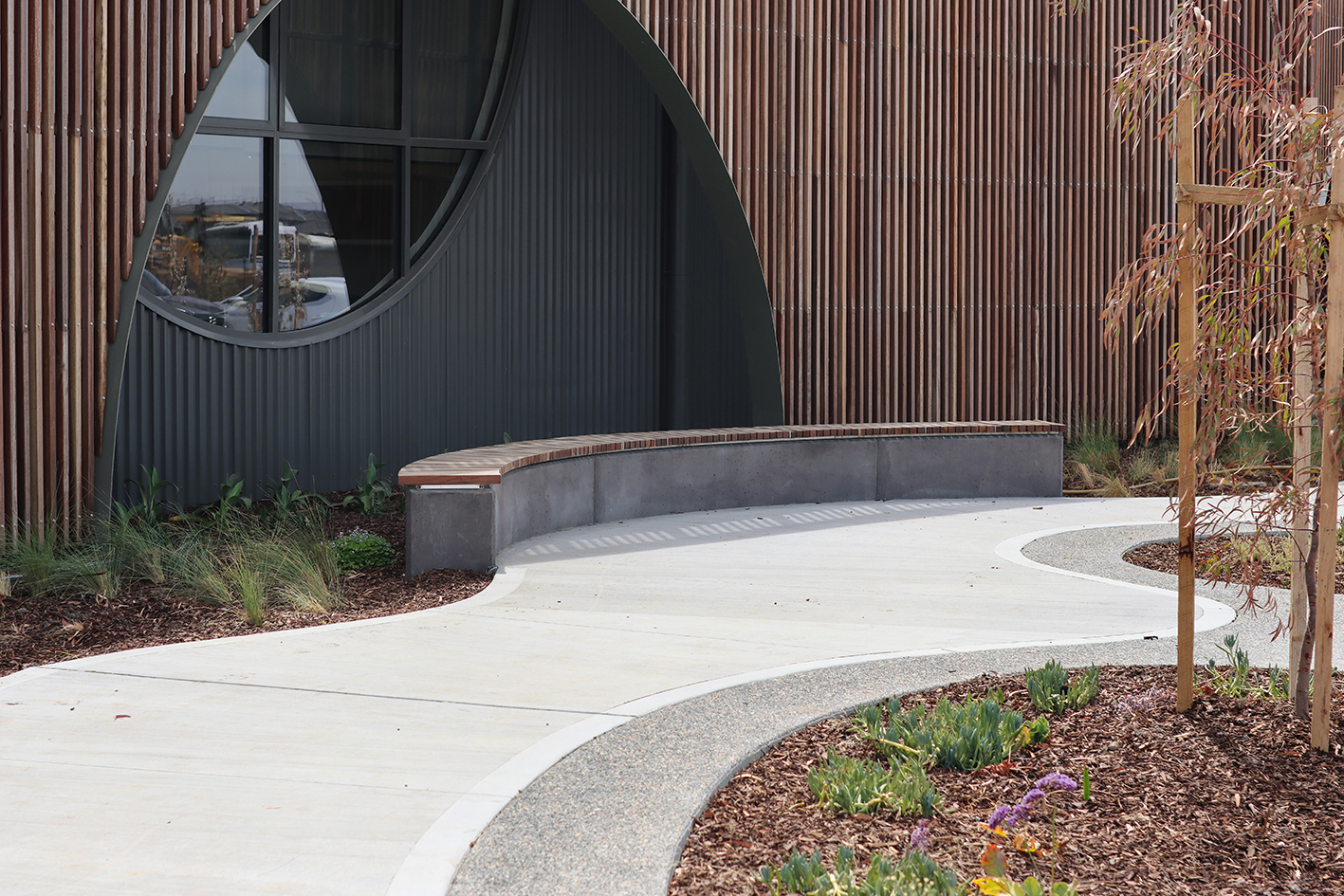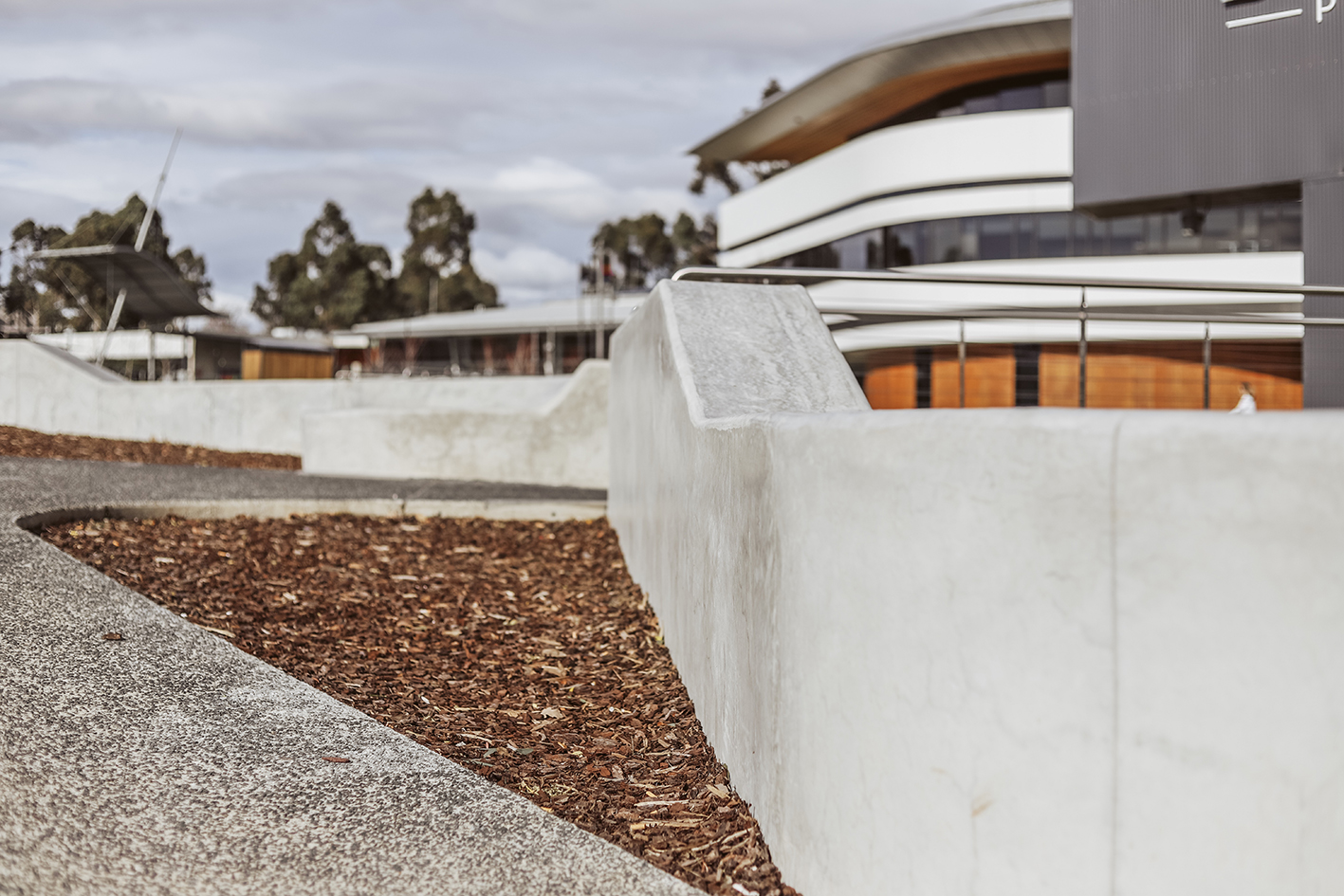Concrete is the world’s most widely used building material in the construction industry. According to a report by the Cement Industry Federation, in 2020, the construction industry consumes approximately 80% of Australia’s concrete for applications such as buildings, roads, bridges, and other infrastructure.
Many opt for concrete due to its versatility, durability and thermal mass benefits, providing optimal resilience and longevity for structures. With the population continuing to grow, concrete’s exceptional properties assist in combating the impact of climate change, creating a foundation for the development of sustainable building globally, without a large land footprint requirement.

Carbon Uptake
Concrete has been the obvious choice for centuries used across a range of applications for construction. The production of traditional concrete involves the extraction and processing of raw materials, including cement, sand, and aggregate. Whilst it is true that concrete manufacture is responsible for considerable CO2 emissions due to the process of creating cement, over time, the industry has taken great strides in reducing emissions, with a goal of carbon-neutral concrete manufacture by 2050.
Carbon uptake has been largely responsible for reducing the environmental impact caused by manufacturing. This is a natural process that occurs post-construction whereby the CO2 emissions created in manufacture can actually be completely reabsorbed over the concrete’s lifecycle when it reacts with the CO2 in the air. This allows this unique building material to become more neutral in its environmental impact over time.
Circularity
Concrete is a completely recyclable building material. At its end of life, this resilient material can be reused, repurposed or even recycled as an aggregate for use in road construction and other infrastructure. This is the perfect display of how concrete acts in the circular economy, contributing to a more sustainable future.
Thermal Properties
One of the key benefits in constructing with concrete, is its remarkable resistance to fire. Not only does this create a safe environment for the community, but by withstanding temperatures of over 1000 degrees Celsius, toxic gases, CO2 emissions and heat transfer are avoided.
Due to the thermal properties of concrete structures, there is also a lower requirement for reconstruction when compared to other fire-prone materials used in building, which may otherwise become impacted.
These innate properties also create high thermal mass. This ability to absorb and radiate heat creates a higher level of comfort and therefore reduces the need for heating in winter and cooling in summer. Often concrete is used in trending passive housing, or to increase the energy efficiency of buildings.
Durability and Strength
The performance of concrete delivers a range of benefits to the environment over its life-cycle, including less maintenance, less repairs and less reconstruction when compared with other building materials. Concrete is crucial when considering structural longevity as it can withstand extreme high and low temperatures, abrasion, salt water, vermin and does not rust or rot. It is the single only building material that has the capacity to withstand any kind of natural disaster including cyclones and floods. This results in less reconstruction which reduces CO2 and dust emissions, making it a sustainable choice.
For large scale infrastructure projects concrete’s ability to self-heal (also known as autogenous healing) is highly beneficial, removing the requirement for repairing or replacing entire buildings as well.

Improved Air Quality
Although the production of concrete creates air pollution, concrete structures themselves actually absorb a high level or the harmful sulfur dioxide and other harmful pollutants.
Infact, it has been suggested by researchers from Stony Brook University in the US to create a strategy based around deliberately using concrete in certain applications to drastically improve air quality around urban designs. It is this innovative thinking which will help to combat climate change for our future generations.
Lower Carbon Concrete Mixes
The environmental impact of concrete can be balanced by using high-performance concrete mixes that require less material to achieve the same strength and durability. This reduces the number of materials required, resulting in less wastage and a smaller environmental impact. At Concretum we use state-of-the-art technology and products to ensure the reduction of our carbon footprint without compromising on quality.
Sustainable Practices
Leaders in the Australian construction industry are continuously seeking ways to reduce their impact on the environment, and Concretum take responsibility for our role in protecting the planet for future generations. We pride ourselves on our sustainable practices, not only regarding the use of concrete, but throughout every aspect of our company.
We believe we can all do our part by prioritising the use of locally sourced materials associated with transportation, recycling and reusing waste materials whenever possible, using energy efficient high-performing materials, equipment and machinery, optimising our truck delivery routes, upskilling and innovation in application, and using environmentally friendly practises in the office.
It is this dedication to sustainable construction practices as a whole which minimises our impact on the environment, whilst still delivering impeccable results for our clients.
To get in touch today and learn more about our sustainable concrete building practices, visit our contact page.

A professional & reliable concreting company that can handle even the most technical jobs.
ADDRESS
94-102 KEYS RD
MOORABBIN VIC 3189


